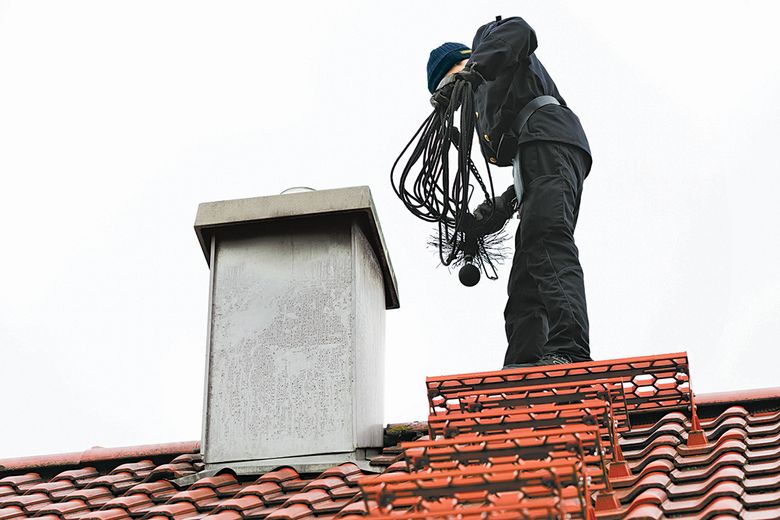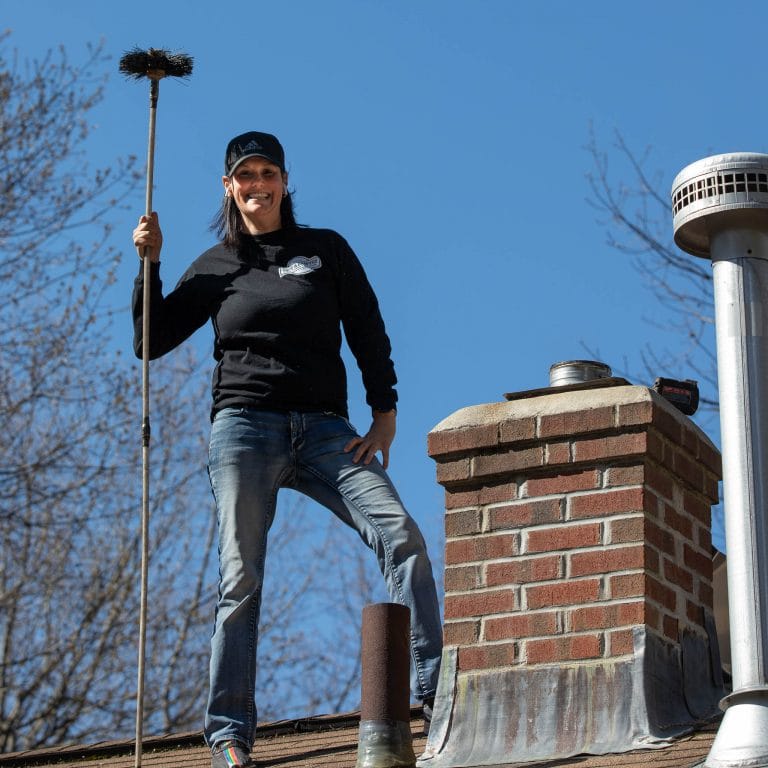Chimney Clean San Jose Proficiency: Specialist Look After Your Fire Place and Fireplace
Chimney Clean San Jose Proficiency: Specialist Look After Your Fire Place and Fireplace
Blog Article
Smokeshaft Cleaning: A Step-by-Step Guide to Preserving a Healthy Fireplace
Keeping a healthy fire place is important for the safety and performance of your home. Normal smokeshaft cleaning is a vital component of this maintenance regimen. In this step-by-step guide, we will give you with comprehensive directions on just how to appropriately cleanse your smokeshaft, guaranteeing that it functions ideally and reduces the risk of fire hazards. By adhering to these guidelines, you will discover exactly how to gather the essential tools, carry out a visual inspection, clear particles and build-up, move the smokeshaft, and finish the final steps for recurring upkeep. With a professional approach and focus to information, you can confidently care for your fireplace and enjoy its warmth and comfort for several years ahead.
Gathering the Needed Tools
To start the procedure of smokeshaft cleaning, the very first step is to gather all the essential tools. Having the right tools at hand makes sure a risk-free and reliable cleaning process. The essential tools for chimney cleansing include a chimney brush, a ladder, decrease fabrics or plastic sheets, a flashlight, handwear covers, and a dirt mask.
The smokeshaft brush is the main tool utilized to eliminate soot and creosote buildup from the flue - Chimney Clean San Jose. It is crucial to pick a brush that matches the dimension and shape of your chimney.
Decline cloths or plastic sheets are crucial for securing the bordering location from dirt and debris. They help include the mess and make clean-up much easier. A flashlight is crucial for examining the smokeshaft's interior for any kind of signs of damage or obstructions. Handwear covers are needed to shield your hands from residue and various other harmful compounds, while a dust mask aids stop the breathing of particles.
Performing a Visual Assessment

Using a flashlight, very carefully check out the interior wall surfaces of the chimney for any type of signs of damages, such as cracks, loose blocks, or mortar wear and tear. These concerns can jeopardize the smokeshaft's structural honesty and position a significant security risk. Additionally, look for any signs of water damages, such as staining or efflorescence, as this can suggest a leaky smokeshaft cap or flashing.
Following, check the chimney flue for any obstructions. Try to find the existence of nesting products, leaves, or debris that may have gathered with time (Chimney Clean San Jose). These obstructions can limit air movement, increase the risk of carbon monoxide gas accumulation, and prevent the smokeshaft's capacity to successfully air vent smoke
During the visual inspection, pay attention to the chimney crown, which is the leading surface area that shields the chimney from moisture. Try to find cracks or missing out on pieces in the crown, as these can permit water to go into the chimney and trigger substantial damages.
Cleaning Particles and Accumulation
After completing the visual evaluation, the next action in chimney cleansing entails clearing up debris and build-up to guarantee the appropriate functioning of the fireplace. Over time, particles such as fallen leaves, twigs, and pet nests can gather in the smokeshaft, blocking the circulation of air and triggering possible fire hazards.
To remove debris and accumulation, it is very important to utilize the right tools and strategies. A chimney brush, particularly created for this purpose, is utilized to remove loose debris and creosote from the chimney wall surfaces. It is necessary to select a brush that matches the dimension of your smokeshaft to guarantee effective cleaning. Before beginning the imp source cleaning procedure, make certain to cover the fire place available to prevent particles from dropping right into the room.
To begin, insert the brush right into the smokeshaft and relocate it up and down, rubbing the wall surfaces to dislodge any debris or creosote. When the brushing is complete, utilize a vacuum cleaner or a smokeshaft brush extension to eliminate the dislodged debris from the fire place.

Sweeping the Chimney
The sweeping of the chimney is a critical action in preserving a healthy and balanced fireplace. With time, soot, creosote, and various other particles can accumulate in the chimney, blocking the flow of air and potentially causing a dangerous buildup of flammable products. Routine chimney sweeper not only makes certain correct ventilation but also avoids the risk of smokeshaft fires.
When it comes to smokeshaft sweeping, it is extremely suggested to employ a professional smokeshaft move. These specialists have the knowledge and devices necessary to securely and successfully eliminate the collected debris from your chimney.
It is very important to note that the regularity of chimney sweeping depends learn the facts here now upon several factors, such as the type of fuel made use of, the quantity of usage, and the kind of chimney. As a general regulation of thumb, it is recommended to have your chimney brushed up and checked at the very least annually.
Final Steps and Upkeep
To make sure ongoing maintenance and optimum efficiency, it is important to carry out regular maintenance practices and follow a comprehensive set of final steps for your fire place. After finishing the chimney sweeping process, the very first step in the last maintenance is to check the chimney cap and stimulate arrestor. These parts stop particles, pets, and rainwater from going into the smokeshaft. Look for any kind of signs of damages or clog, and tidy or fix them if required.

Inspect the inside of the fireplace for any kind of signs of wear and tear, such as fractures, loose bricks, or damaged mortar. These issues can affect the architectural stability and security of the fireplace. Get in touch with a specialist smokeshaft move or view website mason to address them quickly. if any kind of troubles are spotted.
Finally, think about mounting carbon monoxide gas detectors near the fire place and throughout your home. These devices can discover the visibility of this harmful gas, giving an early warning system in instance of a smokeshaft breakdown. On a regular basis check and replace the batteries in these detectors to ensure their effectiveness.
Conclusion
To conclude, following a detailed overview for chimney cleansing is vital in preserving a healthy and balanced fireplace. By collecting the essential tools, carrying out a visual assessment, getting rid of particles and accumulation, and brushing up the chimney, homeowners can ensure the security and efficiency of their fire place. Routine maintenance and cleansing will help protect against smokeshaft fires and boost air high quality in the home. It is crucial to focus on smokeshaft cleaning as a component of total home upkeep.
The crucial tools for smokeshaft cleansing include a smokeshaft brush, a ladder, drop fabrics or plastic sheets, a flashlight, handwear covers, and a dirt mask.
A chimney brush, specifically created for this purpose, is used to eliminate loose particles and creosote from the smokeshaft wall surfaces. Regular smokeshaft sweeping not just ensures proper air flow but additionally protects against the threat of smokeshaft fires.
When it comes to chimney sweeping, it is highly suggested to hire a professional chimney sweep. After finishing the smokeshaft sweeping process, the first action in the final upkeep is to evaluate the chimney cap and spark arrestor.
Report this page